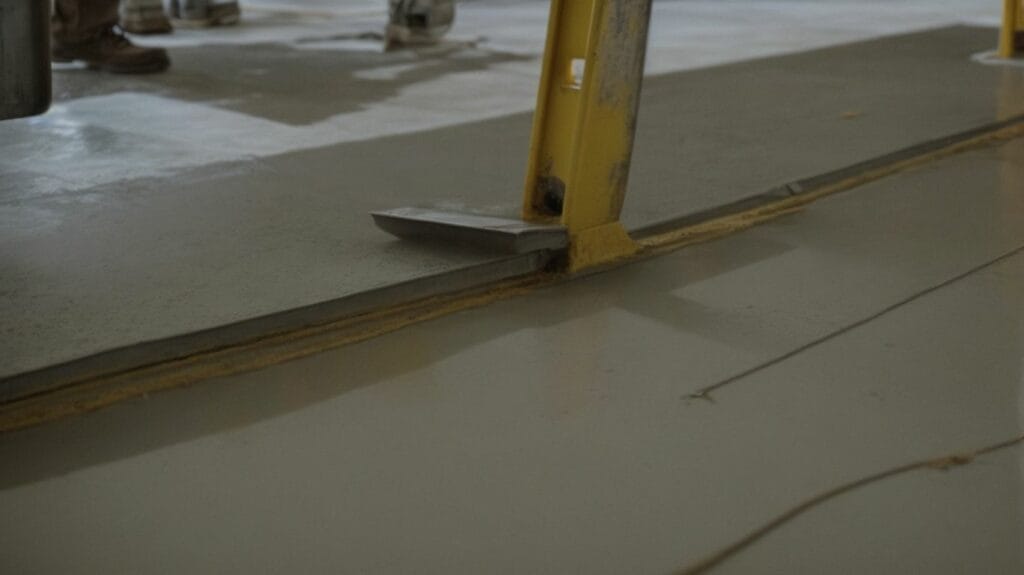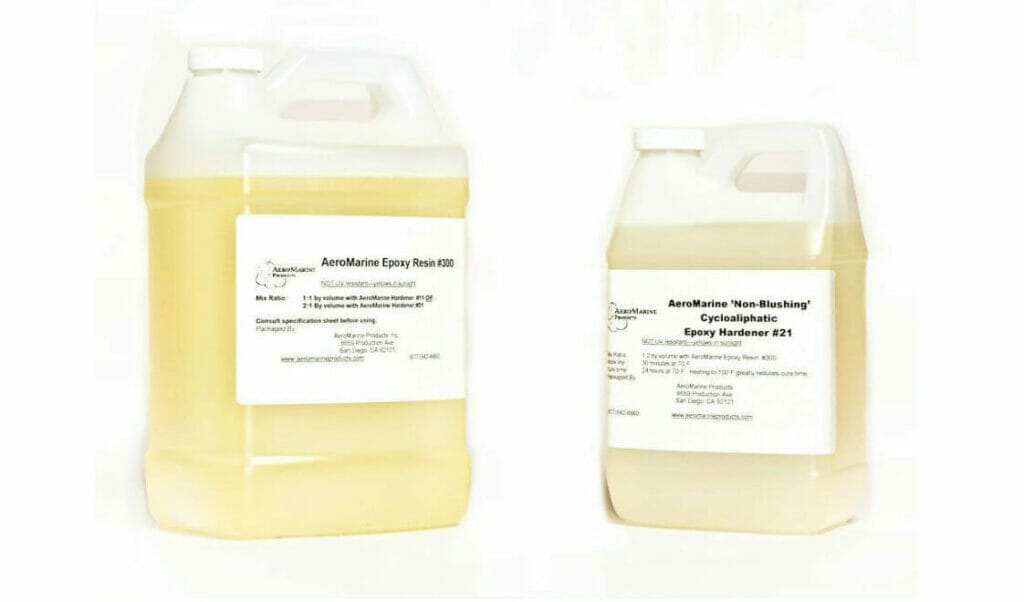Cementitious urethane is a type of flooring material that is composed of cement, aggregate, water, and resin. It is known for its durability, chemical resistance, and ease of installation, making it a popular choice for both industrial and commercial applications.
This specialized flooring system is a combination of the strength of cement and the flexibility of urethane, creating a strong and durable surface that can withstand harsh conditions.
Cementitious urethane is commonly used in industrial settings such as food and beverage processing plants, pharmaceutical facilities, and chemical processing plants. It is also suitable for commercial spaces like restaurants, retail stores, and healthcare facilities. Its unique properties make it ideal for areas that require a highly durable and hygienic flooring solution.
One of the main advantages of using cementitious urethane is its outstanding chemical resistance. It can withstand exposure to harsh chemicals, oils, and acids without deteriorating, making it a popular choice for industrial settings. Additionally, its seamless and non-porous surface makes it easy to clean and maintain, reducing the risk of bacteria growth and ensuring a hygienic environment.
There are three main types of cementitious urethane: self-leveling, trowel-applied, and slurry. Self-leveling cementitious urethane is used to create a smooth and flat surface, while trowel-applied urethane is ideal for areas that require a textured finish or non-slip properties. Slurry cementitious urethane is used to create a thick and durable surface that can withstand heavy traffic and extreme conditions.
The components of cementitious urethane include cement, aggregate, water, and resin. These materials are mixed on-site and then applied to the prepared floor. The resin acts as a binder, holding the other materials together and creating a strong and durable flooring system.
Cementitious urethane is often compared to epoxy and polyurethane flooring systems. While all three options are suitable for industrial and commercial settings, there are some key differences. Cementitious urethane offers superior durability and chemical resistance compared to epoxy and polyurethane. It also has a quicker installation process and is more cost-effective in the long run due to its longer lifespan.
Key Takeaways:
- Cementitious urethane is a versatile flooring material that is commonly used in industrial and commercial settings due to its durability and chemical resistance.
- This type of urethane is typically used for applications such as food and beverage processing, pharmaceutical manufacturing, and healthcare facilities.
- Cementitious urethane is available in various forms, including self-leveling, trowel-applied, and slurry, and its components typically include cement, aggregate, water, and resin.
What Is Cementitious Urethane?
What is Cementitious Urethane?
Cementitious urethane is a hybrid polymer floor coating that is well-known for its durability, chemical resistance, and thermal shock tolerance. This self-leveling system is designed to bond to concrete tightly, making it the perfect choice for industrial settings, commercial kitchens, and healthcare facilities. With its seamless and easy-to-clean surface, cementitious urethane is a highly sought-after flooring solution for environments that prioritize sanitation and long-lasting quality.
How Is Cementitious Urethane Used?
- Surface preparation: Clean and prepare the substrate for application.
- Primer application: Apply a suitable primer to enhance adhesion.
- Mixing: Combine the resin and hardener as per the manufacturer’s instructions.
- Application: Use a trowel to apply the cementitious urethane seamlessly.
- Curing: Allow the applied material to cure properly for optimal performance.
A food processing facility utilized cementitious urethane to upgrade its flooring, ensuring a seamless, durable, and easy-to-clean surface.
What Are the Applications of Cementitious Urethane?
The uses of cementitious urethane are wide-ranging, encompassing both industrial and commercial environments. It is frequently employed in food and beverage processing facilities, pharmaceutical manufacturing areas, commercial kitchens, and healthcare facilities. Its exceptional strength, resistance to chemicals, and ability to withstand moisture also make it a popular choice for wet processing zones, such as packaging and bottling areas.
A helpful tip: When considering the applications of cementitious urethane, carefully evaluate the environmental conditions and performance needs to select the most appropriate type and installation method for the best outcomes.
What Are the Advantages of Using Cementitious Urethane?
Cementitious urethane offers a multitude of benefits, including:
- Superior durability
- Exceptional chemical resistance
- Fast installation
- Cost-effectiveness
In industrial settings, it serves as a strong flooring solution, guaranteeing long-lasting results and withstanding harsh chemicals and heavy traffic. The seamless and efficient application process of cementitious urethane minimizes downtime, resulting in savings on labor costs. When compared to epoxy and polyurethane, it surpasses in terms of longevity, chemical resistance, and overall cost-effectiveness.
What Are the Types of Cementitious Urethane?
Cementitious urethane is a versatile and durable flooring material that is becoming increasingly popular in various industries. But did you know that there are different types of cementitious urethane? In this section, we will discuss the three main types: self-leveling, trowel-applied, and slurry. Each type has its unique properties and uses, so let’s dive in and explore the different types of cementitious urethane and their specific applications.
1. Self-Leveling Cementitious Urethane
When working with self-leveling cementitious urethane, follow these steps:
- Prepare the surface by removing any contaminants and ensuring it’s clean and dry.
- Prime the surface using a suitable primer to enhance adhesion.
- Mix the self-leveling compound according to manufacturer instructions.
- Pour the mixture onto the surface and spread it evenly using a gauge rake or trowel.
- Allow the material to self-level and cure as per the recommended time.
In the early 1900s, self-leveling cementitious urethane was first developed for use in industrial flooring applications, completely transforming the process of floor installation and maintenance.
2. Trowel-Applied Cementitious Urethane
- Surface Preparation: Clean the substrate and ensure it is free of any contaminants.
- Mixing: Thoroughly combine the components of trowel-applied cementitious urethane.
- Application: Use a trowel to apply the mixture onto the prepared surface evenly.
- Smoothing: Smooth out the applied material to achieve the desired finish.
- Curing: Allow the material to cure according to the manufacturer’s recommendations.
3. Slurry Cementitious Urethane
- Preparation: Clean the surface thoroughly to remove any contaminants or debris.
- Mixing: Combine the 3. slurry cementitious urethane components according to the manufacturer’s instructions, ensuring a consistent texture.
- Application: Spread the slurry evenly over the prepared surface using the appropriate tools and techniques.
- Curing: Allow the slurry to cure as per the specified time and environmental conditions.
- Finishing: Once cured, perform any necessary finishing procedures to achieve the desired surface characteristics.
A construction company once utilized 3. slurry cementitious urethane to refurbish a commercial kitchen floor, providing exceptional durability and chemical resistance and meeting the client’s stringent hygiene standards.
What Are the Components of Cementitious Urethane?
In order to understand the properties and applications of cementitious urethane, it’s important first to examine its components. Cement, aggregate, water, and resin all play a crucial role in the formation and performance of this versatile material. By exploring the unique properties and functions of each component, we can gain a deeper understanding of the overall composition of cementitious urethane and its various uses in industrial and commercial settings. So, let’s take a closer look at the components of this durable and resilient material.
1. Cement
- Cement is an essential element in cementitious urethane, providing necessary structural support and strength.
Once, a construction project faced a dilemma due to a shortage of cement. After exploring other suppliers, they were able to obtain the necessary cement and successfully finished the project within the designated timeframe.
2. Aggregate
- Prepare Surface: Ensure the surface is clean, free of debris, and properly cured.
- Mix Aggregate: Combine cement, water, and resin, then add the aggregate to the mixture.
- Spread Mixture: Apply the cementitious urethane mixture evenly over the prepared surface.
- Level and Cure: Level the mixture with a trowel or screed and allow it to cure as per the manufacturer’s instructions.
Fact: Cementitious urethane mixed with aggregate provides exceptional impact resistance, making it a great option for industrial flooring.
3. Water
- Water is a vital component in the formulation of cementitious urethane as it acts as a medium for the chemical reactions that take place during installation.
- A proper water-to-material ratio is crucial for achieving the desired consistency and performance of cementitious urethane flooring.
- Throughout the curing process, water plays a crucial role in ensuring the development of the material’s strength and durability.
Did you know? The amount of water in cementitious urethane greatly affects its final properties, making it crucial to control it carefully during application carefully.
4. Resin
- Resin is a crucial component of cementitious urethane, providing flexibility and impact resistance.
- The resin binds the aggregate and cement together, forming a durable and resilient flooring surface.
- Ensure the proper selection of resin to match the specific performance and chemical resistance requirements of the flooring system.
In the world of flooring, the use of resin in cementitious urethane is essential for ensuring durability and impact resistance.
How Is Cementitious Urethane Different from Epoxy and Polyurethane?
When it comes to flooring options, there are many different materials to choose from. One popular choice is cementitious urethane, but how does it differ from other commonly used options like epoxy and polyurethane? In this section, we will explore the unique characteristics of cementitious urethane and compare them to these other materials. From durability and chemical resistance to installation time and cost, we’ll break down the key differences between these flooring options and help you determine which one is the right fit for your needs.
1. Durability
- Opt for cementitious urethane for its high durability against heavy foot traffic, impact, and abrasion.
- To ensure optimal adhesion and performance, make sure to prepare the surface before application properly.
- For added protection and longevity, consider applying a topcoat sealer.
Pro-tip: Regular maintenance and timely resealing can greatly increase the lifespan of cementitious urethane floors.
2. Chemical Resistance
- Choose a chemical-resistant cementitious urethane system to protect floors against harsh substances.
- Ensure the system has a dense, impermeable surface that can withstand acids, alkalis, and solvents.
- Verify that the system is resistant to oils, fats, salts, and other corrosive materials for industrial and commercial settings.
Fact: Cementitious urethane offers exceptional chemical resistance, making it the perfect choice for industries that require durable flooring solutions.
3. Installation Time and Process
- Preparation: Prior to installation, it is important to clean the surface and ensure its structural integrity thoroughly.
- Mixing: Follow the manufacturer’s guidelines to properly blend all necessary components, including cement, aggregate, water, and resin.
- Application: Use the chosen method, such as self-leveling or trowel-applied, to apply the mixture evenly and achieve uniform coverage.
- Curing: Allow the cementitious urethane to cure for the specified time before subjecting it to any traffic or stress.
- Finishing: Once fully cured, the surface can be finished according to the desired specifications.
4. Cost
- Cost of Materials: Take into consideration the expenses involved in purchasing cementitious urethane, including cement, aggregate, water, and resin.
- Installation Costs: Account for the labor and installation charges, which may vary depending on the type of cementitious urethane chosen.
- Maintenance Expenses: Evaluate the long-term costs associated with maintaining, repairing, and potentially replacing cementitious urethane flooring.


